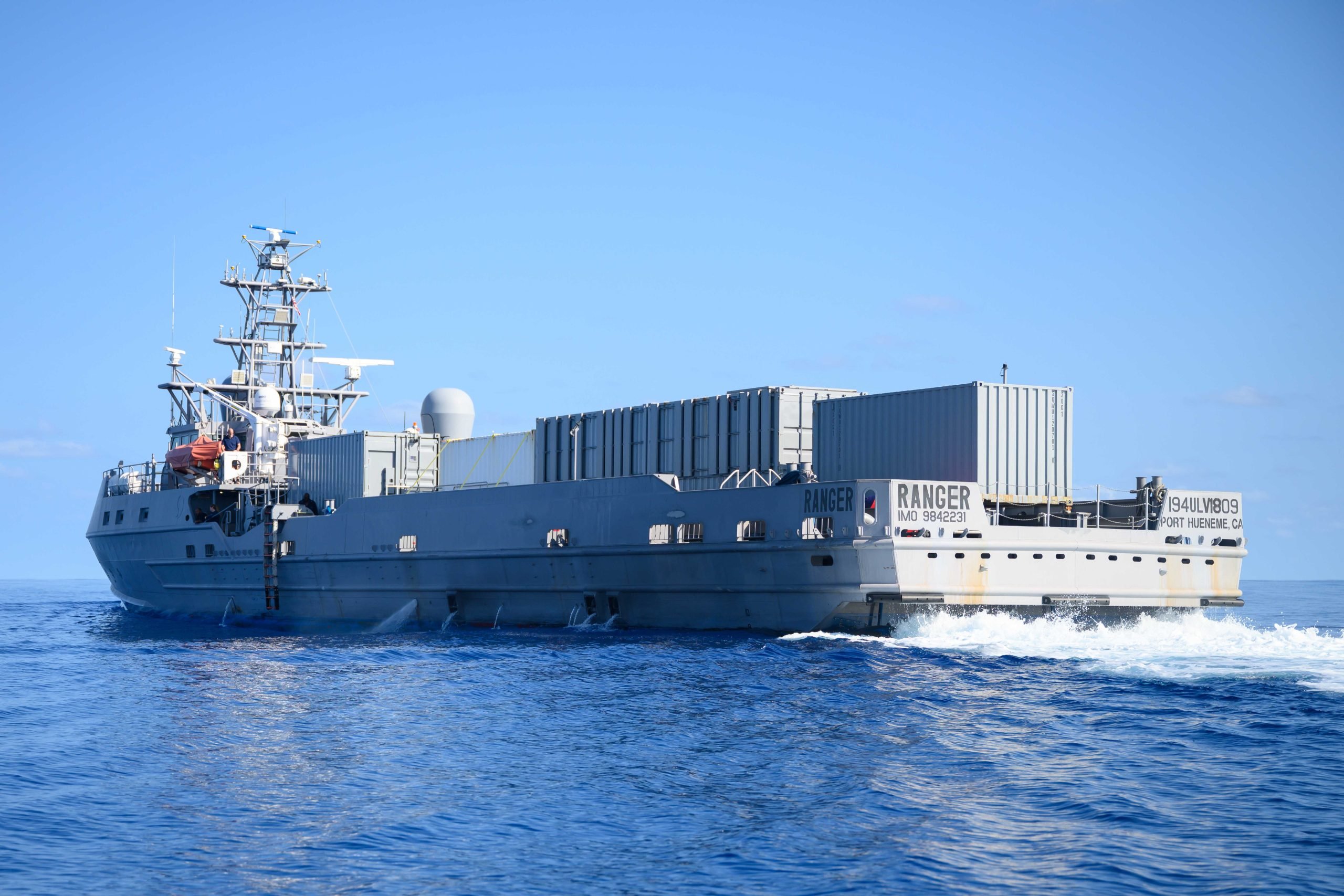
Two of the Navy’s Ghost Fleet unmanned surface vessel prototypes pulled into Yokosuka, Japan, this week as part of a Pacific road show to introduce the fleet to the possibility of USVs, service officials said on Thursday.
USVs Mariner and Ranger and the staff Unmanned Surface Vessel Division ONE (USVDIV-1) left California last month and sailed to Hawaii as part of a wide-ranging testing program for the Navy’s future USV fleet, Cmdr. Jeremiah Daley told reporters in a phone interview from Japan.
The service believes unmanned or optionally manned vessels will be key to how the Navy’s surface fleet will operate in the future by extending the awareness and deepening the magazines of manned ships, Daley said.
“The ability to turn one surface action group of three destroyers and a certain number of USVs and convert them into three surface action groups covering three or four or five times more space… is a game changer,” he said.
Mariner and Ranger are technology demonstrators for the Navy’s Large USV. The service is set to finalize requirements for the first LUSV by the end of the year and wants to have nine under contract by Fiscal Year 2028, USNI News reported earlier this year.
“The LUSV will be capable of weeks-long deployments and trans-oceanic transits and operate aggregated with Carrier Strike Groups (CSGs), Amphibious Ready Groups (ARGs), Surface Action Groups (SAGs), and individual manned combatants,” reads the Navy’s FY 2024 budget documents.

Enhancing manned vessels with more weapons and more sensors is a key component of the emerging distributed maritime operations (DMO) concept that expands the connections between ships.
“[DMO] gives us the ability to mass fires under the principles of expanded maneuver, and that has been enabled by our ability to disaggregate sensor, shooter and platform to be able to achieve massive fires on particular centers of gravity, while dispersing and operating formations more dynamically,” U.S. Pacific Fleet commander Adm. Sam Paparo told reporters last month.
The deployment of the Ghost Fleet ships and the smaller Sea Hawk and Sea Hunter USVs are testing how to make the broader concepts work in the real world.
“Nothing can replace being out in the field,” Daley said.
Mariner and Ranger joined in last month’s global Large Scale Exercise 2023 operating with Carrier Strike Group 1 and aircraft carrier USS Carl Vinson (CVN-70) to extend the sensor range of the strike group. From Hawaii, the two USVs operated with ships from Destroyer Squadrons 7 and 15 and Marines from the 3rd Marine Division, Daley said.
The units the USVDIV paired with could take advantage of the sensor data from the modular payloads on Mariner and Ranger. The two ships, originally designed as off-shore oil and gas support vessels – can carry standard shipping containers with a variety of sensors and weapons
“From a training and exercise perspective we are a fully operational unit,” Daley said.
“From controlling the vessels or utilizing the payloads that are on the vessels [we are] completely integrated.“
The vessels are capable of fully autonomous operations in the open sea and can be controlled from a shore-based operations center or from a nearby ship.
While the ships are autonomous, a civilian master mariner is always on watch on the bridge of each vessel.
“Other than transiting in and out of port we have used the ships in autonomy mode as much as practical,” he said.





